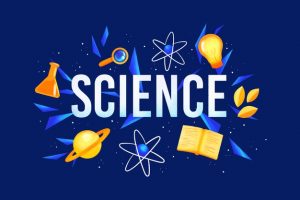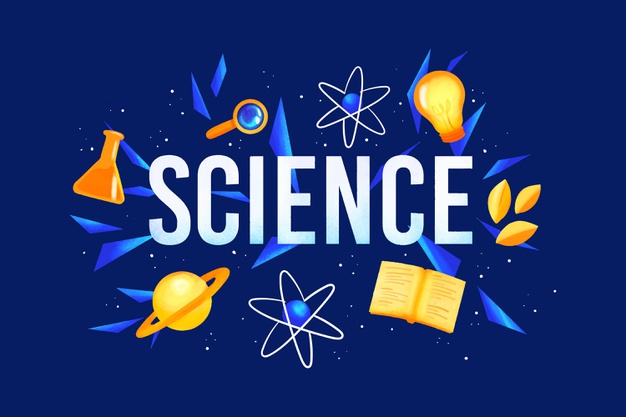JAMB Subject Combinations for Courses in the Sciences 2023
Contents

We are aware at mytopschools.com that you are searching for JAMB Subject Combinations for Courses in the Sciences 2023, jamb subject combination for all courses pdf, jamb subject combination for education courses, jamb subject combination for art courses, waec subject combination for all courses, what course can i study with english physics, chemistry and biology, courses and their subjects, subject combination for jamb 2023, jamb subject combination for law then you are not alone.
This is the full list of JAMB Subject Combinations for Sciences. As a matter of fact, we have compiled this list for all prospective JAMBites for the forthcoming UTME. Note that English Language is compulsory for all. Hence, it is already an automatic part of the subject combinations:

DOWNLOAD APP HERE
1. Agriculture:
Agriculture is the science or practice of farming. In fact, it includes the cultivation of the soil for the growing of crops. Also, it involves the rearing of animals to provide food, wool, and other products.
Courses like Agriculture, Agricultural Economics, Agricultural Extension, Agronomy, Animal Science, Crop Science, Food Science and Technology, Fisheries, Forest Resources Management (Forestry), Home Science, Nutrition and Dietetics and Soil Science fall under the Faculty of Agriculture.
Faculty: Agriculture
Subject Combination: English, Chemistry, Biology/Agriculture and any one of Physics and Mathematics.
2. Agricultural Economics:
Agricultural economics is an applied field of economics concerned with the application of economic theory in optimizing the production and distribution of food and fibre.
Faculty: Agriculture
Subject Combination: English Language, Chemistry, Biology/ Agricultural Science and Mathematics.
3. Agricultural Engineering:
Agricultural Engineering is the branch of engineering that deals with the design of farm machinery, the location and planning of farm structures, farm drainage, soil management and erosion control, water supply and irrigation, rural electrification, and the processing of farm products.
Faculty: Engineering
4. Agricultural Extension:
Agricultural extension is the application of scientific research and knowledge to agricultural practices through providing information and education to farmers.
Faculty: Agriculture
5. Agronomy:
Agronomy is a branch of agriculture that deals with the science of soil management and crop production.
Faculty: Agriculture
6. Anatomy:
Anatomy is the branch of medical science concerned with the bodily structure of humans, animals, and other living organisms, especially as revealed by dissection and the separation of parts.
Faculty: Medical Sciences
7. Animal Production and Science:
Animal Science is described as studying the biology of animals that are under the control of humankind. These animals include but are not limited to beef cattle, dairy cattle, horses, poultry, sheep, and swine.
Faculty: Agriculture
8. Architecture:
Architecture is the profession of designing buildings, open areas, communities, and other artificial constructions and environments, usually with some regard to aesthetic effect.
Faculty: Environmental Sciences
9. Biochemistry:
Biochemistry is the branch of science concerned with the chemical and physico-chemical processes and substances which occur within living organisms.
Faculty: Biological Sciences
10. Biological Sciences:
Biological Sciences involve the study of living organisms, such as plants, animals and other living organisms.
Courses like Biochemistry, Botany, Microbiology, Marine Biology, Zoology, Cell Biology and Genetics fall under the faculty of Biological Sciences.
Faculty: Biological Sciences
11. Botany:
Botany is the scientific study of the physiology, structure, genetics, ecology, distribution, classification, and economic importance of plants.
Faculty: Biological Sciences
12. Building:
Building involves the the act, business, or practice of constructing houses, office buildings, and other forms of physical structures. It also involves the study of how these structures impact the environment.
Faculty: Environmental Sciences
13. Chemistry:
Chemistry is the branch of science concerned with the substances of which matter is composed, the investigation of their properties and reactions, and the use of such reactions to form new substances.
Faculty: Engineering
14. Civil Engineering:
Civil Engineering is a professional engineering discipline that deals with the design, construction, and maintenance of the physical and naturally built environment, including works like roads, bridges, canals, dams, and buildings.
Faculty: Engineering
15. Chemical Engineering:

DOWNLOAD APP HERE
Chemical Engineering is the branch of engineering concerned with the design and operation of industrial chemical plants.
Faculty: Engineering
16. Computer Engineering:
Computer engineering is a discipline that integrates several fields of electrical engineering and computer science required to develop computer hardware and software.
Faculty: Engineering
17. Computer Science:
Computer Science is the science that deals with the study of the principles and use of computers.
Faculty: Physical Sciences
18. Crop Production and Science:
Crop Production and Science is the study that is concerned with the selection, improvement and production of crops useful to man.
Faculty: Agriculture
19. Dentistry:

DOWNLOAD APP HERE
Dentistry is a branch of medicine that is involved in the study, diagnosis, prevention, and treatment of diseases, disorders and conditions of the oral cavity, commonly in the dentition but also the oral mucosa, and of adjacent and related structures and tissues, particularly in the maxillofacial (jaw and facial) area.
Faculty: Dentistry
20. Electrical Engineering:
Electrical engineering is a field of engineering that generally deals with the study and application of electricity, electronics, and electromagnetism.
Faculty: Engineering
21. Electronic Engineering:
Electronic engineering is a branch of engineering that deals with the design, fabrication, and operation of circuits, electronic devices, and systems.
Faculty: Engineering
22. Estate Management:
Estate management is a discipline that involves the management of urban and rural buildings.
Faculty: Environmental Sciences
23. Fisheries:
Fisheries involves science of producing fish and other aquatic resources for the purpose of providing human food, obtaining ornamental fish or fish products.
Faculty: Agriculture
24. Food Science and Technology:
Food science is the study of the physical, biological, and chemical makeup of food; the causes of food deterioration; and the concepts underlying food processing.
Faculty: Agriculture
25. Forestry:
Forestry is the science and craft of creating, managing, using, conserving, and repairing forests and associated resources to meet desired goals, needs, and values for human and environment benefits.
Faculty: Agriculture
27. Geology:
Geology is the science which deals with the physical structure and substance of the earth, their history, and the processes which act on them.
Faculty: Physical Sciences
28. Industrial Chemistry:
Industrial chemistry is concerned with using chemical and physical processes to transform raw materials into products that are beneficial to humanity.
Faculty: Physical Sciences
29. Mathematics:
Mathematics is the abstract science of number, quantity, and space, including as abstract concepts (pure mathematics), and as applied to other disciplines such as physics and engineering (applied mathematics).
Faculty: Physical Sciences
30. Marine Engineering:
Marine engineering includes the engineering of boats, ships, oil rigs and any other marine vessel or structure, as well as oceanographic engineering.
Faculty: Engineering
31. Mechanical Engineering:

DOWNLOAD APP HERE
Mechanical engineering is the branch of engineering dealing with the design, construction, and use of machines.
Faculty: Engineering
32. Medical Laboratory Science:
Medical Laboratory Science is a discipline that involves the use of clinical laboratory tests to detect, diagnose, monitor, and treat disease.
Faculty: Health Sciences
33. Medical Rehabilitation:
Medical Rehabilitation is a medical specialty concerned with diagnosis, evaluation, and management of persons of all ages with physical and/or cognitive impairment and disability.
Faculty: Health Sciences
34. Medicine and Surgery:

DOWNLOAD APP HERE
Medicine is the science and practice of the diagnosis, treatment, and prevention of disease. Surgery on the other hand is the branch of medicine that employs operations in the treatment of disease or injury.
Faculty: Medical Sciences
35. Metallurgical and Materials Engineering:
Metallurgical and materials engineering is the branch of engineering that deals with the study of the characteristics and uses of the various materials, such as metals, ceramics, and plastics, that are employed in science and technology.
Faculty: Engineering
36. Microbiology:
Microbiology is the branch of biology dealing with the structure, function, uses, and modes of existence of microscopic organisms.
Faculty: Biological Sciences
37. Nursing:
Nursing is the discipline concerned with the provision of services essential to the maintenance and restoration of health by attending the needs of sick persons.
Faculty: Health Sciences
38. Petroleum and Gas Engineering:
Petroleum and Gas engineering is a field of engineering concerned with the activities related to the production of hydrocarbons, which can be either crude oil or natural gas.
Faculty: Engineering
39. Pharmacy:
Pharmacy is a discipline that involves the science or practice of preparation, dispensing, and proper utilization of drugs and medicines.
Faculty: Pharmaceutical Sciences
40. Physiology:
Physiology is the branch of biology dealing with the functions and activities of living organisms and their parts, including all physical and chemical processes.
Faculty: Medical Sciences
41. Physiotherapy:
Physiotherapy is a discipline which involves the treatment of disease, injury, or deformity by physical methods such as massage, heat treatment, and exercise rather than by drugs or surgery.
Faculty: Medical Sciences
42. Physics:
Physics is the branch of science concerned with the nature and properties of matter and energy. The subject matter of physics includes mechanics, heat, light and other radiation, sound, electricity, magnetism, and the structure of atoms.
Faculty: Physical Sciences
43. Production and Industrial Engineering:
Production and industrial engineering is branch of engineering involving the design, development, implementation, operation, maintenance, and control of all processes in the manufacture of a product.
Faculty: Engineering
44. Pure and Applied Mathematics:
Pure and Applied Mathematics is the abstract science of number, quantity, and space, including as abstract concepts (pure mathematics), and as applied to other disciplines such as physics and engineering (applied mathematics).
Faculty: Physical Sciences
45. Quantity Surveying:
Quantity surveying is the discipline or profession that deals with estimating and managing the cost of the materials and labour necessary for a construction job.
Faculty: Environmental Sciences
46. Radiography:
Radiography is the process or occupation of taking radiographs using imaging techniques of the inside of a person’s body to assist in medical examinations.
Faculty: Health Sciences
47. Statistics:
Statistics is a branch of mathematics dealing with the collection, analysis, interpretation, and presentation of masses of numerical data.
Faculty: Physical Sciences
48. Soil Science:
Soil science is the branch of science concerned with the formation, nature, ecology, and classification of soil.
Faculty: Agriculture
49. Structural Engineering:
Structural Engineering is the branch of civil engineering that deals with large modern buildings and similar structures.
Faculty: Engineering
50. Surveying and Geoinformatics:
Surveying and Geoinformatics is a discipline that involves examining and recording the area and features of an area of land so as to determine its size and boundaries as well as construct a map, plan, or description. It also involves the science which develops and uses information science infrastructure to address the problems of geography and cartography—the practice of drawing maps.
Faculty: Environmental Sciences
51. Systems Engineering:
Systems engineering is an interdisciplinary field of engineering that focuses on how to design and manage complex engineering systems over their life cycles.
Faculty: Engineering
52. Urban and Regional Planning:
Urban and Regional planning is a professional discipline which embraces management of the physical spaces and urban environment.
Faculty: Environmental Sciences
53. Veterinary Medicine:
Veterinary medicine is the branch of medicine that deals with the prevention, diagnosis and treatment of disease, disorder and injury in non-human animals.
Faculty: Veterinary Medicine
54. Zoology:
Zoology is the scientific study of the behaviour, structure, physiology, classification, and distribution of animals.
Faculty: Biological Sciences
READ THIS RELATED JAMB POSTS TO KNOW MORE ABOUT JAMB
Price, Selling Points of JAMB UTME E-Pin (Scratch Card)
Joint Admissions and Matriculation Board JAMB Guidelines For Admission
Joint Admissions and Matriculation Board JAMB Cut-Off Marks Admission Exercise
Free JAMB Past Questions for (PDF Format) Download Here
Joint Admissions & Matriculation Board JAMB Brochure
JAMB Subject Combinations for All Courses
JAMB CAPS How to ACCEPT or REJECT Admission Offer
How to Print JAMB Original Result Slip for All Years
How to Easily Register JAMB Using Interswitch
Joint Admissions and Matriculation Board JAMB Mock Examination for UTME Candidates
JAMB Profile Code Generation & Purchase of e-Pin for New & Previously Used Numbers
Joint Admission Matriculation Board JAMB Institution Matriculation List (JAMB CAPS)
How to Create JAMB Online Profile
How to Buy JAMB ePINS Via Interswitch
UTME: Joint Admissions and Matriculation Board JAMB List of Prohibited Items in Exam Hall
JAMB Direct Entry Form Approved Selling Points
JAMB Direct Entry Registration : Instructions & Guidelines
AMB Direct Entry Registration Centres in Nigeria
JAMB Subject Combinations for Courses in the Arts
JAMB Subject Combinations for Courses in the Social Sciences
JAMB Subject Combinations for Courses in the Sciences
JAMB Recommended Books for Music
JAMB Recommended Books for Mathematics
Requirements to Start a JAMB CBT Centre
Joint Admissions and Matriculation Board JAMB Form – Registration Instructions and Guidelines
